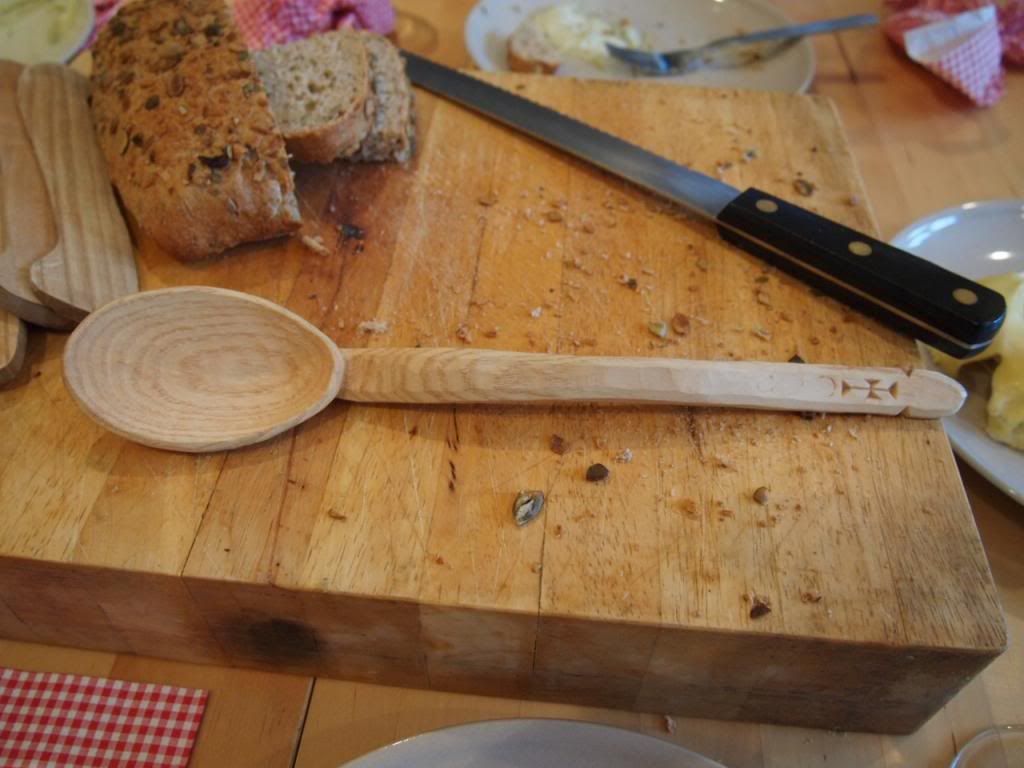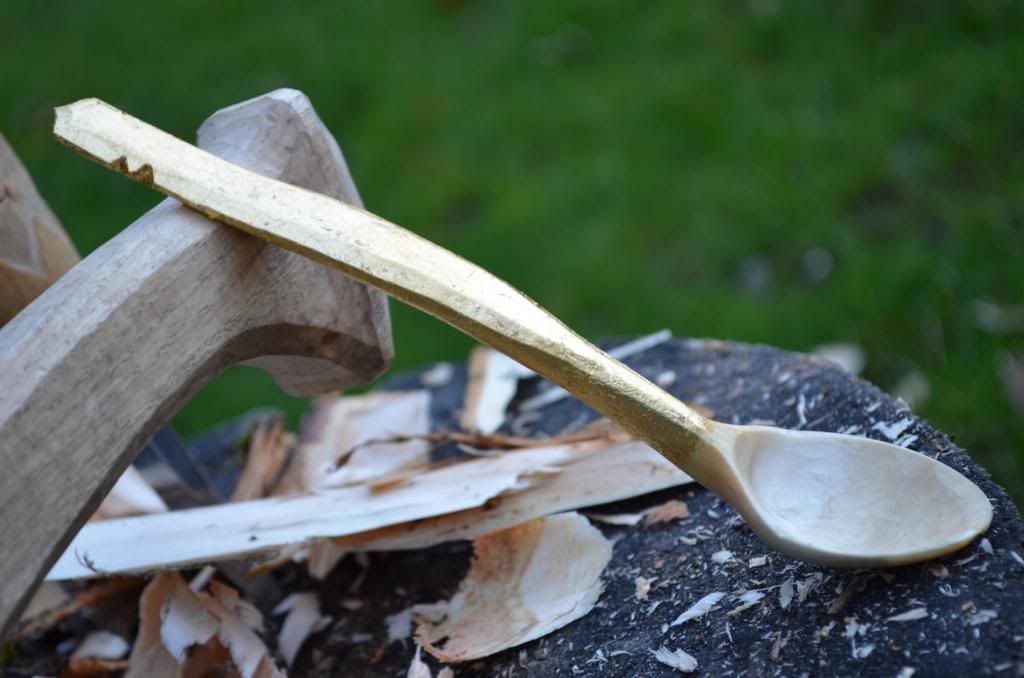This week's spoon is one of my all time favourites so far. There's just something about it that ticks (nearly) all the boxes for me. I like the proportions; I like the overall shape; I like the bevel on the bowl rim; I don't mind the carving on the handle. I particularly like how heavily cranked it is - by this I mean the curve from tip of handle, down along the stem, and through the bowl to the tip of the bowl. You can see it quite clearly on the side view. I just like spoons that are cranked, and this one is about at the limit you can achieve before turning it into a laddle, or making it impractical to use.
The only thing I don't like so much about it? Well, again, it's ash and so very blonde. That's not such a bad thing in and of itself, but for my personal tastes, I like wood with a little colour, just a blush of darkness perhaps. I'm kind of hoping it might colour up a bit with age and oiling - this one's not fully dried out and so won't take on oil properly yet. I'd thought I might like to paint it, if I had the right paint. I still might some time in the future.I think that would make the carving on the handle stand out more - you can barely see it on thses photos.
It's tiny, I know. My intention was to make one that can just slip in my pocket - a replacement for one I'd made previously but that got broken. One that I can take hiking and camping and backpacking and that won't take up too much space.
 |
| Couldn't find an egg cup so used one of my turned trinket boxes, sans lid |
I thought it would be ideal for eating boiled egg, hence the pictures. I'm a fairly good cook, but I really do struggle with achieving a boiled egg with a soft yolk. Poached eggs? No problem - got my system down to a tee: once the water is boiling, crack in the egg, push down the toaster; once the toast pops, the egg's ready to come out - perfect semi runny yolk. Oh well, I guess I'll just have to practice.


















